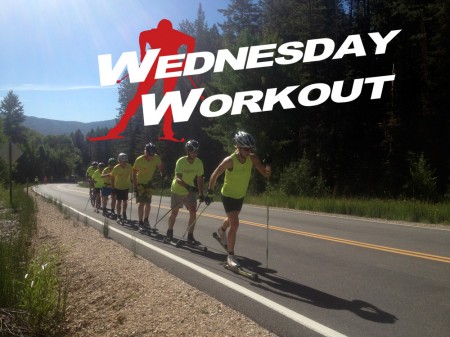
This week’s Wednesday Workout comes from Joe Howdyshell, executive director of the Summit Endurance Foundation and former coach of the Summit Nordic Ski Club (SNSC) in Frisco, Colo. Throughout his four years with SNSC, Howdyshell coached athletes to 17 top-10 Junior Nationals finishes, one Junior World Championships qualification, and one U18 Trip qualification.
***
It should always be our goal to turn technique into habit. This allows the athlete to worry about terrain and tactics during racing instead of getting lost in thoughts of “Forward hips” and “High hands.” However, an athlete first needs to start with a thought that their technique isn’t as good as they want, and then work on performing the skill correctly (note: I define a skill as “a particular ability.” You can have a bad skill).
In order to form a habit, you need a skill. In order to have a skill, you need a thought.
In endurance sports, we spend a looooooot of time on habits. A two hour workout will quickly turn any skill into a habit. We also tend to work straight from thought to habit by giving 1-2 cues for a long workout.
Today we’re going to work on the bridge between thoughts and skills, AKA skill acquisition. Since we spend so much time turning skills into habits, we want to make sure we’re starting with good skills!
Whether you are a beginner skier focused on skill acquisition, or a seasoned pro focused on refining habits, going back to the basics and touching on the thought/skill gap goes a long way.
Before the workout:
1. Sit down with your coach and talk about your technique weaknesses. Develop your thoughts on what parts of your technique need to be better.
2. Develop a set of drills to challenge those weaknesses, and learn/refine skills. No need to reinvent the wheel, there are lots of great drills out there, from the old US Ski Team Technique DVD, to the new CXC Academy videos.
3. Perform drills before EVERY rollerski!
The Basic Workout:
1. Equipment check: Drills tend to be dynamic, explosive, boundary pushing workouts, and an equipment malfunction can end in a painful lesson.
2. Short warmup/play/agility. About 5 minutes.
3. Pick 3-5 drills to perform. Such drills include:
- Single sticking
- Tricep double poling
- Running on rollerskis
- No-pole balancing
- 2 V2 (two pole plants per glide while skating)
4. Set 2 cones 50 meters apart.
5. Perform drill from cone to cone, ski back to beginning, and repeat 3-5 times, with 3-5 drills. Should take less than 5 minutes, but if done before every rollerski workout, it will make a big difference!
There are two main movements that I start with. The first I call the “dip,” which is a small downward movement before any kick (classic or skate). If I see that an athlete is not dipping, I introduce drills that encourage them to become overly dynamic, so that they feel what a dip feels like. These drills would include any kinds of jumping or skipping, as you can’t perform either of those without having vertically dynamic hips. The second movement I look for is the same thing in the upper body. At the Summit Nordic Ski Club we used to call it the “hulk smash.” This is simply the body loading the arms before the power is applied. It can be seen by a very small EXTENSION of the shoulder joint just before flexion. This is one of the harder ones to see, but is absolutely critical to upper body power. Again, if I see an athlete who isn’t properly loading their poles, I introduce drills to exaggerate the loading. One of my favorites is the “head down” drill, where the athlete is directed to lead the pole plant with their head (and thus shoulders), and swing the hands through last, creating a crack-the-whip movement.
By focusing on perfecting skills EVERY DAY, we can ensure that the habits learned during long focused practice are the BEST habits for ski racing!
(Note: The previous photo caption erroneously stated the athletes in the photo were from the Summit Endurance Academy.)




2 comments
wutup
July 23, 2014 at 2:06 pm
This article could have been so much more. All that is offered is that if you do something repetitive you can make it a habit and that doing so mindfully will be more effective at forming that habit.
Well what habits are good? What are bad? What drills should be done to alter or learn specific skills? Many skiers could have benefitted from that basic information, but this piece is totally bare bones.
Also, the picture caption?? Pretty sure that’s Liz, leading some junior males. Whitcomb on a bike. Gotta be from a REG and definitely not “The Summit Endurance Academy performs rollerski drills in Summit County, Colo.”
howdyski
July 24, 2014 at 9:29 am
Good morning, wutup.
You are correct. The article could be so much more. In fact, it could be a whole book. As a result, I tried to put together something that would in fact design a workout shell, it being a “Workout Wednesday,” and give you the “why” behind it. We’re going to add some basic thoughts, but I could write 10 other articles on “what habits are good, and what are bad.” While I can certainly write those if people want ’em, that wasn’t the point of this article. If you’d like to have a deeper discussion, or suggest some other content issues, my email is Joe (at) Summit Endurance Academy dot com.
Cheers.
Joe
Thanks for reading!